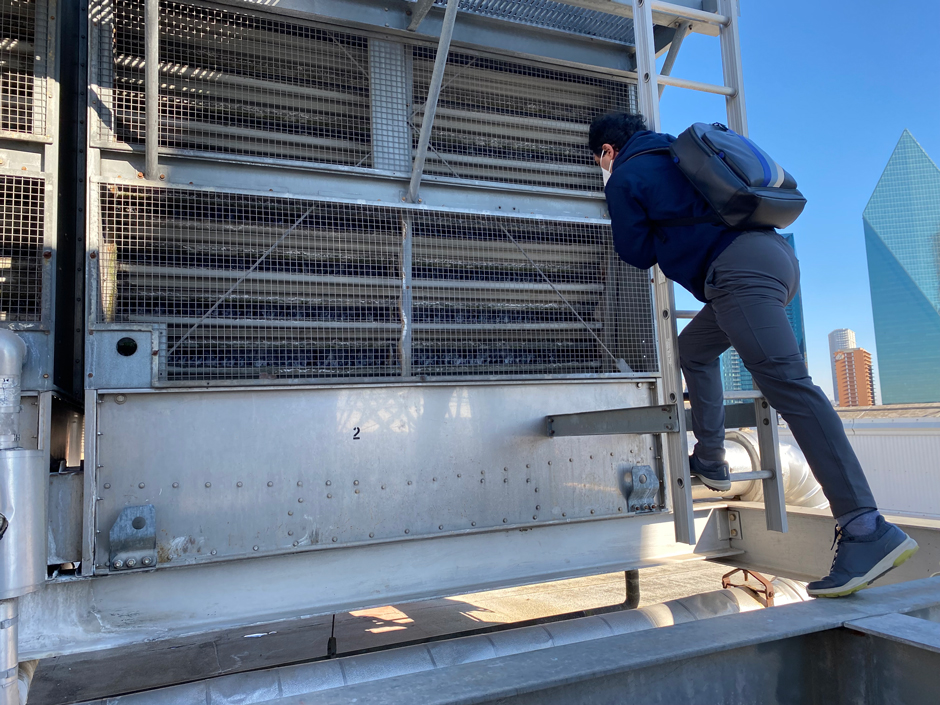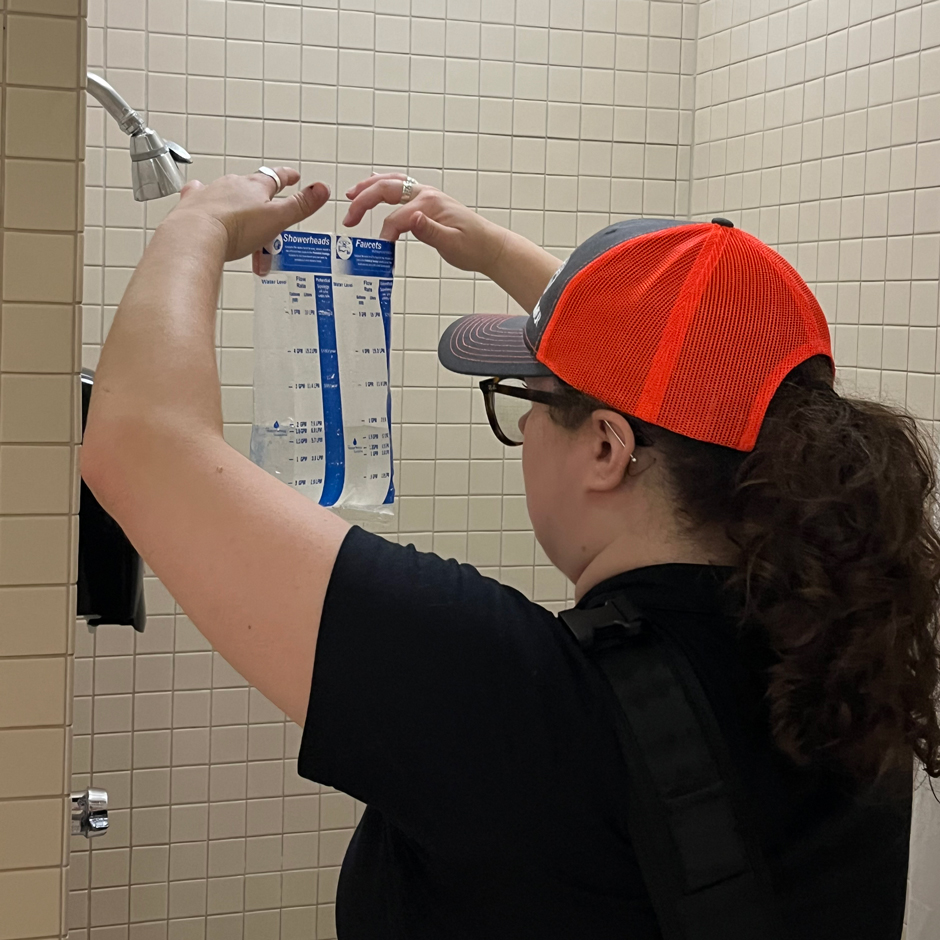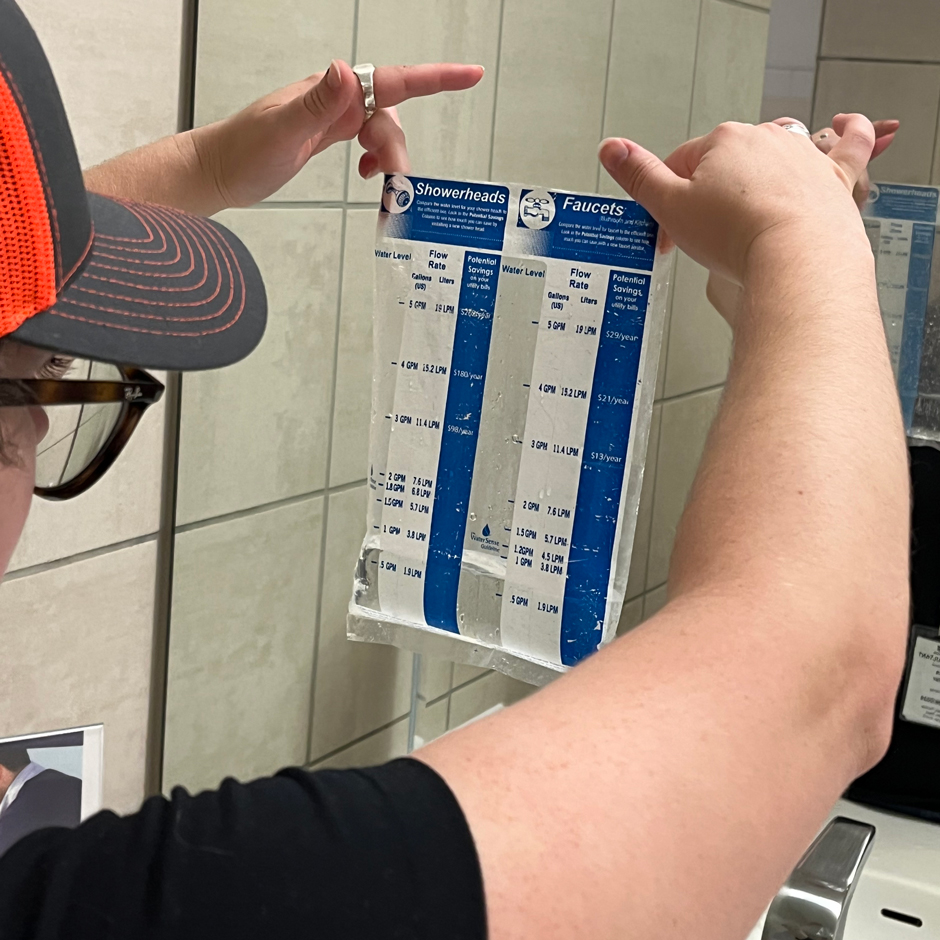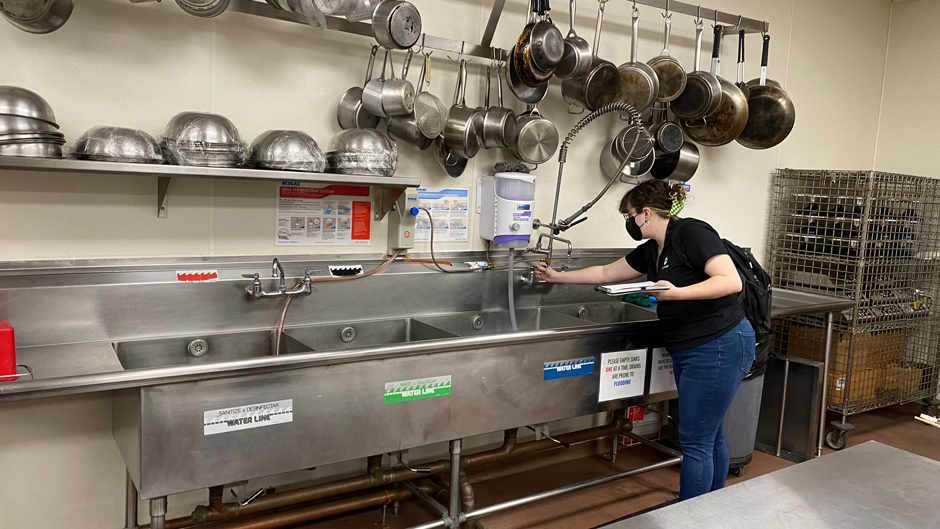Water Conservation and Smart Growth in Texas
 Plummer WEES team member inspects an industrial cooling tower to determine how it is running. (Credit: Water and Energy Efficiency Team/Plummer)
Plummer WEES team member inspects an industrial cooling tower to determine how it is running. (Credit: Water and Energy Efficiency Team/Plummer)As states face annual droughts and water use continues to grow in order to meet population and production demands, water conservation is essential to protecting natural resources and long-term reliance.
Over the years, conserving water has become more necessary as the world’s natural resources continue to be strained in order to meet needs. As a result, water conservation consultants have filled an essential niche in resource management.
Eddie Wilcut, the Water & Energy Efficiency Practice Leader at Plummer, started his career in the Air Force, where he took some classes focusing on water resources. In those classes, Wilcut read Aldo Leopold’s “A Sand County Almanac,” and a specific line has stuck with him for the past 26 years.
Wilcut quotes Leopold’s text, saying, “‘We have the duty to do not only what is environmentally and aesthetically right, but also what is economically expedient.’”
He continues, “In other words, what he was saying is that we must consider the business case for doing the right thing. And I think more than anything, that statement set me on the path that I follow today, which is making the business case for doing the right thing.”
Water Conservation and Encouraging Smart Growth
Having grown up in south Texas, Wilcut grew up hearing about the misuse of water resources and the declining Edwards Aquifer impacting San Antonio’s water use, as well as being warned about the growing water and energy needs of cities as they grow.
In response to the declines, the city implemented pumping restrictions and invested millions in water conservation efforts. Wilcut stresses that water conservation isn’t just about doing what’s right—it’s about doing what is necessary.
He elaborates, “I was able to develop real programs and real partnerships that went a long way. I look back today, and I see that 20 years later, San Antonio is using about the same amount of water, but they have grown by 20%. That’s a win-win situation, and what we like to call ‘smart growth.’ So that’s really how I got started.”
Because water and energy are closely related, conservation must occur on both fronts. No city or business will stifle its growth without reason, and smart growth ensures that these entities can continue to meet public needs while balancing water and energy use and cost to ensure sustainable growth.
“It takes a tremendous amount of energy to produce water, and a tremendous amount of water to produce energy, so we always need to consider both. What we can’t do is assume that we’re doing the right thing simply by trading one resource for another,” stresses Wilcut.

Team member measures water flow in a shower to determine its average water use. (Credit: Water and Energy Efficiency Team / Plummer)
Developing Plans for Smart Growth
In addition to helping businesses and cities achieve smart growth, Wilcut helps ensure that institutional knowledge on conservation practices is passed down to the next generation of professionals. According to Wilcut, preserving this knowledge ensures that conservation plans are considered in the long term, not just the short term.
In the post-COVID world, it has become more difficult for professionals like Wilcut to connect with clients—however, he believes it’s never been more important to make those connections.
“What is it that keeps them up at night? What do they struggle with? What problems can you help them address? We lose so much in a phone call, a Zoom call, a Team’s call—we really need to make the effort to meet with our clients face-to-face if we’re going to foster strong partnerships or collaborations,” explains Wilcut.
He continues to state that many conservation plans are boilerplate solutions, but Plummer works to go beyond these often unspecific solutions. Instead of creating generic plans, Wilcut works more closely with partners, examining the factory, building, or other locations where resources are being overused and creating targeted solutions.
Fortunately, many of the clients reaching out to Plummer for recommendations are open to more efficient and effective practice changes in order to save on cost. In the future, the price of water and energy will inevitably increase, and choices made today will have a huge impact.
While drought management and water-use ordinances are effective when enacted, they are short-term solutions to emergencies—smart growth seeks to prevent these emergencies through informed use and management.
Forming State and Local Partnerships
Over the years, Plummer has worked closely with factories, businesses, and government entities to preserve natural resources for future generations.
The city of Dallas and Plummer have had a long-standing partnership for over two decades, working with government officials and departments to conserve resources. In 2005, Dallas Water Utilities and Plummer wrote the first strategic conservation plan, which went several steps further than the typical boilerplate water conservation plan.
In a strategic plan, the company sets long- and short-term goals, defines the steps needed to meet those goals, how long the programs will run, what the budget is, and other elements often missed in the boilerplate solution. The strategic plan also looks at current use and identifies any losses that exist within current practices.
Wilcut explains, “Some utilities have a 10% water loss, meaning that 10% of all the water they produce is lost through leaks in the distribution system. With cities the size of Dallas, San Antonio, and Houston, you’re talking about 1000s of miles of mains. So, one of the efforts outlined in the strategic plan is reducing leaks by repairing and replacing mains.”

Team member measures water flow in a sink to determine its average water use. (Credit: Water and Energy Efficiency Team / Plummer)
He continues, “It’s a very robust report—several 100 pages—and what it lists out is what you’re going to do, how you’re going to do it, and all the costs associated.”
The success of the plan secured a partnership between Plummer and the city that has lasted over 20 years.
A similar partnership in San Antonio allowed Wilcut to work with private companies and government entities. To this day, Wilcut continues to develop commercial and institutional water conservation programs for these groups.
Private companies like Frito Lay produce large quantities of products distributed across the U.S. and utilize a large amount of energy and water in order to meet manufacturing goals. The goal of the partnership between San Antonio and Frito Lay was to decrease water use overall and save the company money on utilities.
The city of San Antonio provided Frito Lay with over $400,000 in rebates to reduce water consumption. A year after the project concluded, Frito Lay successfully reduced water use by 50% and doubled production.
In a board meeting with the city shortly after the conclusion of the project, Wilcut stated, “ʻOver the last year, Frito Lay has effectively doubled their production of potato chips in San Antonio. They’re producing double the amount of product with the same amount of water! Isn’t that what we want?’”
He continues, “There’s no city that is going to put a moratorium on growth. It’s just not going to happen [. . .] So, what you want to do, and the best thing to do is accommodate smart growth.”
When Wilcut first entered this career in the late 90s, he worked with schools and local businesses like hotels to see how he could help them conserve water. Unfortunately, many of these upgrades were unattainable due to cost.

Team member inspects sink in a commercial-grade kitchen to check for leaks. (Credit: Water and Energy Efficiency Team / Plummer)
To remedy this, the city of San Antonio secured 3.3 million dollars a year for these conservation programs. When the funding became available, the partnerships Wilcut had formed early on at the schools and businesses were the first to receive funds.
“Including those people and developing those partnerships was so important. Outreach is the only way you’re going to identify those partnerships. You have to really solicit involvement and feedback, and you have to be passionate enough about what you do to grab people’s interest,” states Wilcut.
He adds, “If you really believe in what you’re doing, and you’re passionate about it, you get people that stick around. Twenty-six years later, I have some lifelong friendships that started back in the 90s, based on my approach to partnerships and outreach.”
Conclusion
Wilcut elaborates, “When it comes to environmental regulations, and people are fighting over violations of environmental rules in the court system, spending millions of dollars on attorneys and settling out for less-than-expected fines—how much of that money could have been saved? And how much bigger of an impact could we have had on the environment if we had actually worked with people and made the business case for doing the right thing?”
Seeing the success of these win-win scenarios and smart growth initiatives has been the most rewarding part of Wilcut’s 26-year-long career.
“I’ve had the honor and privilege of witnessing 1000s of success stories over my 26 years, and I’m hopeful for many more,” states Wilcut.




0 comments